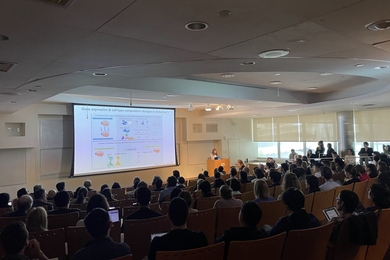On March 22, the city of Atlanta was hit by cyberattackers who locked city-wide systems and demanded a bitcoin ransom. Many city systems still have not recovered, and the cost to taxpayers may have reached as high as $17 million.
Also in March, the U.S. Department of Justice indicted nine Iranian hackers over an alleged spree of attacks on more than 300 universities in the United States and abroad. The hackers stole 31 terabytes of data, estimated to be worth $3 billion in intellectual property.
And recently engineers at Facebook detected the biggest security breach in Facebook's history. It took the company 11 days to stop it.
The FBI reports that more than 4,000 ransomware attacks occur daily. Large private sector companies routinely grapple with cybersecurity and fending off cybercrime, and corporate security isn't getting better fast enough. Cyber risk has emerged as a significant threat to the financial system: A recent IMF study suggests that average annual losses to financial institutions from cyber-attacks could reach a few hundred billion dollars a year, potentially threatening financial stability. Hacker attacks on critical infrastructure are already alarming, and the security of our cyber-physical infrastructure — the computer-controlled facilities that produce and deliver our energy, water, and communications, for example — are dangerously exposed.
This imminent danger is the subject of study by Stuart Madnick, founding director of the Cybersecurity at MIT Sloan Initiative. In a recent article for The Wall Street Journal, Madnick warned of weakest link in the defense against cyberattacks: people.
“Too many companies are making it easy for the attackers to succeed,” Madnick writes. “An analogy that I often use is this: You can get a stronger lock for your door, but if you are still leaving the key under your mat, are you really any more secure?”
In today’s landscape of escalating cybercrime, resiliency calls for a new kind of leadership and cybersafe culture, requiring the active engagement of both technical and non-technical management. This holistic approach is all the more urgent given the shortage of cybersecurity personnel; in the U.S. alone, 1 to 2 million cyber security analyst roles will go unfilled this year. This holistic approach is the focus of a new MIT Sloan Executive Education program taught by Stuart Madnick and his colleagues Keri Pearlson and Michael Seigel: Cybersecurity Leadership for Non-Technical Executives.
Cybersecurity issues are not purely a technology problem — they are multi-headed hydras that need to be addressed with a multi-disciplinary approach. This timely new program provides general managers with frameworks and best practices for managing cybersecurity-related risk. It also addresses the element common among many of the attacks that strike organizations every day — in particular, attacks that start as phishing or “spearphishing” emails. They rely on people falling for them.
“Such gullibility … is the result of a cyberculture where people are willing to share all kinds of information and try new things all the time,” writes Madnick in his recent WSJ article. “There are lots of good things about that, but also much that is dangerous. So now is the time for companies and institutions to change that culture. It won’t be easy, and it will take some time. But it’s crucial if we want our companies and information to be safe from cybertheft. We have to start now, and we have to do it right.”
The first session of Cybersecurity Leadership for Non-Technical Executives will occur Nov. 6-7.. The program will be offered again in April and July of 2019.






